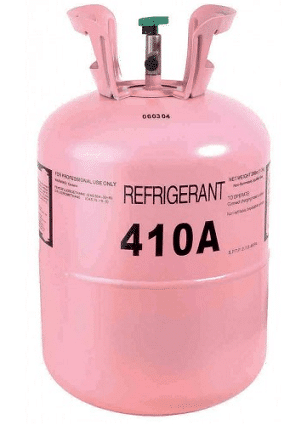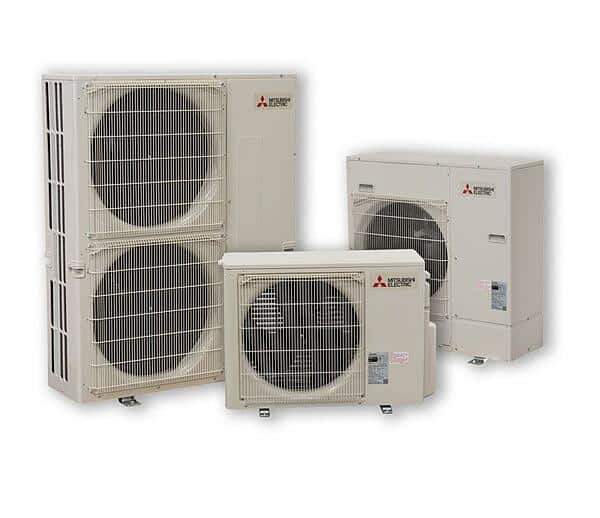The Main Parts
In the simplest terms, an air conditioner removes warm air from the inside of your home or business and replaces it with cool air. That process involves the following elements:
- Refrigerant
- Compressor
- Condenser
- Expansion Valve
- Evaporator Coil
There are many different types of air conditioning systems including window AC units, ductless systems, and central HVAC systems. Despite the differences between all of these systems, they all essentially cool the air in the same way. In fact, air conditioning systems work nearly the same way that your fridge does to keep food cool. To learn more, take a look at how each of these individual elements work together.
Refrigerant

On a basic level, your air conditioner works like a circulatory system, pumping refrigerant instead of blood. As refrigerant moves through the system, it absorbs heat from the indoors and releases it outside. Through this process, the refrigerant has to change states from a vapor to a liquid. Luckily, refrigerant has a low boiling point, and that allows it to change from a liquid to a vapor without creating a lot of excess heat.
Compressor
As the “heart”, the compressor pumps the refrigerant through the rest of the system. The cooling cycle starts when the compressor draws in refrigerant gas through the suction line from the evaporator. At this point, the refrigerant is a low-pressure gas that has absorbed the hot air in your home. The motor-driven compressor uses a piston to squeeze the refrigerant to increase its temperature and pressure, and that causes the refrigerant to turn into a hot, high-pressure gas vapor. Then, the refrigerant flows through the discharge line into the condenser.
Condenser
Once the hot refrigerant vapor flows to the condenser, the condenser fan blows on the refrigerant to cool down the hot gas. As the refrigerant changes temperature again, it turns from a high-pressure gas vapor to a hot liquid, and it begins to move toward the expansion valve.
Mitsubishi outdoor condenser units

Expansion Valve
The hot liquid refrigerant passes through a small opening in the valve and emerges as a cool low-pressure mist. This happens because the valve reduces the pressure of the refrigerant, and that speeds up the cooling process. The expansion valve also controls how much refrigerant can flow through the system, and that helps to boost the overall efficiency of the system. After passing through the valve, the low-pressure cool liquid mist moves to the evaporator coil.
Evaporator Coil
The evaporator coil is made of a conductive metal such as copper, aluminum, or steel. First, that metal attracts some of the heat in the room, and then, that heat passes to the refrigerant. During this process, some water vapor from the room also tends to hit the outside of the evaporator coil. When the warm vapor hits the cold coil, it condenses into a liquid. That helps to reduce the humidity in the room, and your AC also deals with that excess water, often by collecting it in a pan.
No matter what type of air conditioning system you have, the parts all need to work together to cool the room. Additionally, they must be regularly maintained to ensure your air conditioning system continues to work as efficiently as possible. If you’re not getting cool air, one of these parts may not be working properly and you should contact an HVAC technician as soon as possible.
At NETR Inc., we have been providing high quality air conditioning services since 1989. As one of the leading providers of ductless AC in Boston and surrounding areas in Massachusetts, we can help you achieve the level of comfort you need in your home or business. Call us today at 781-933-NETR(6837).


